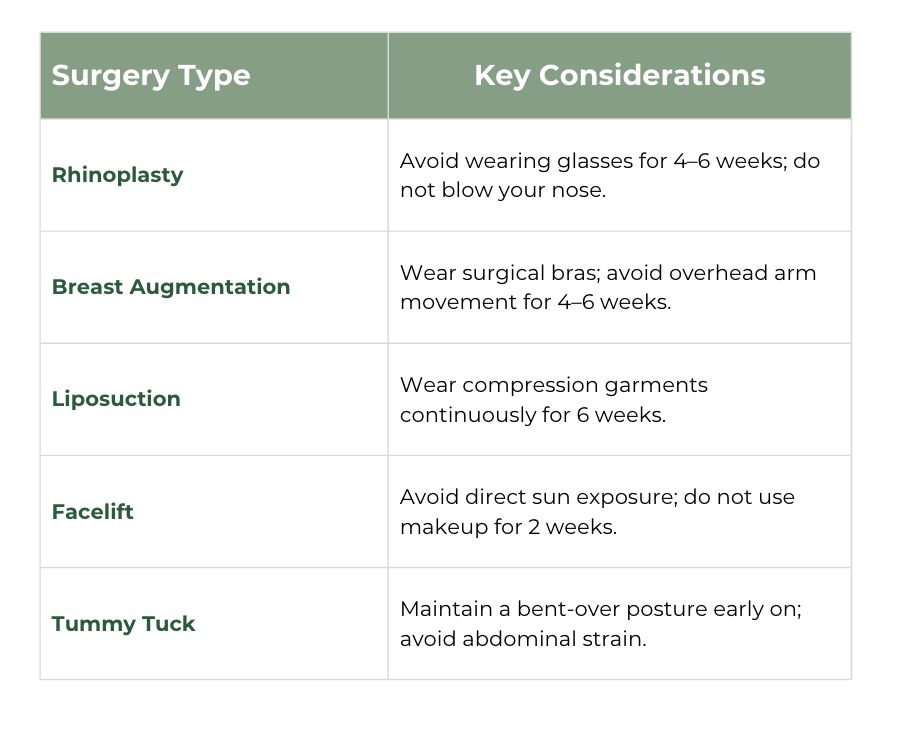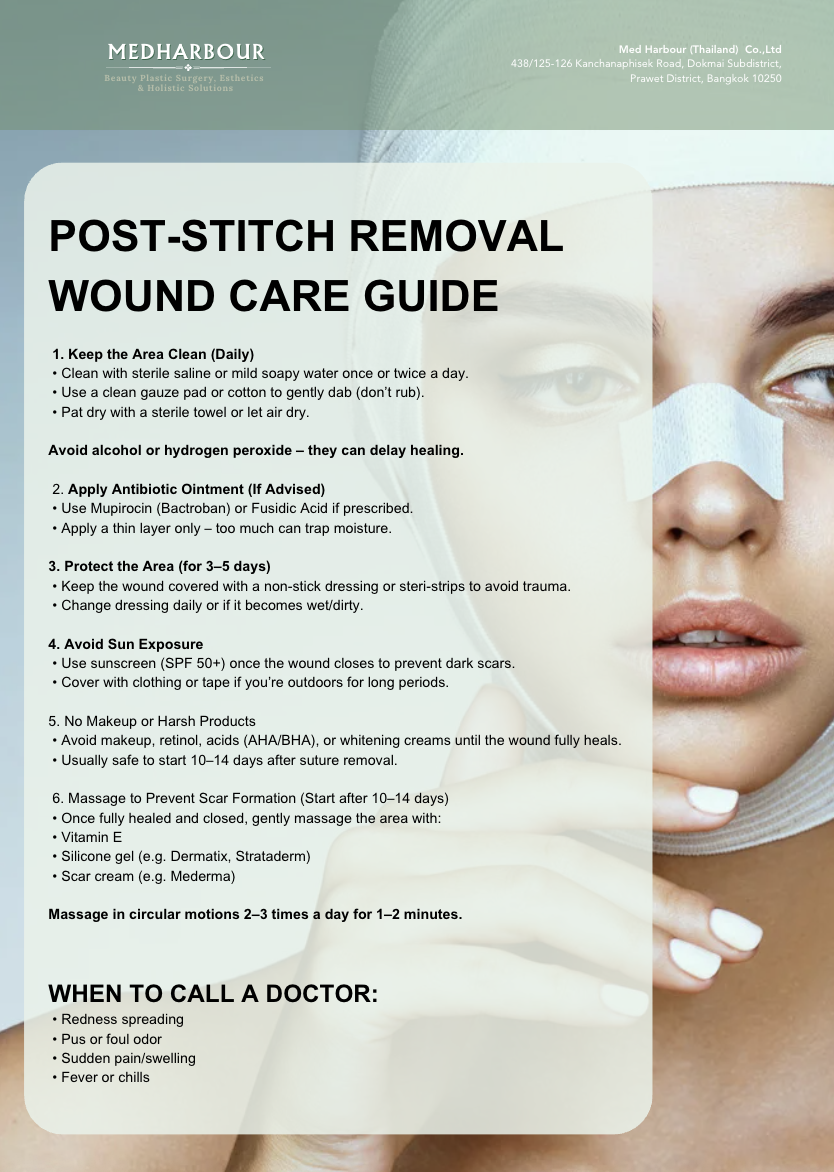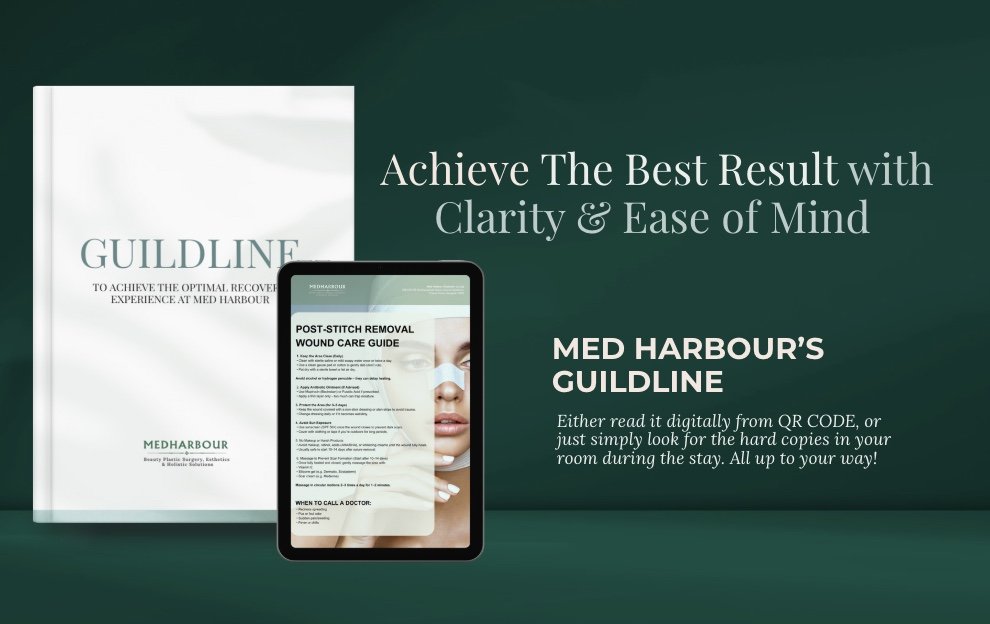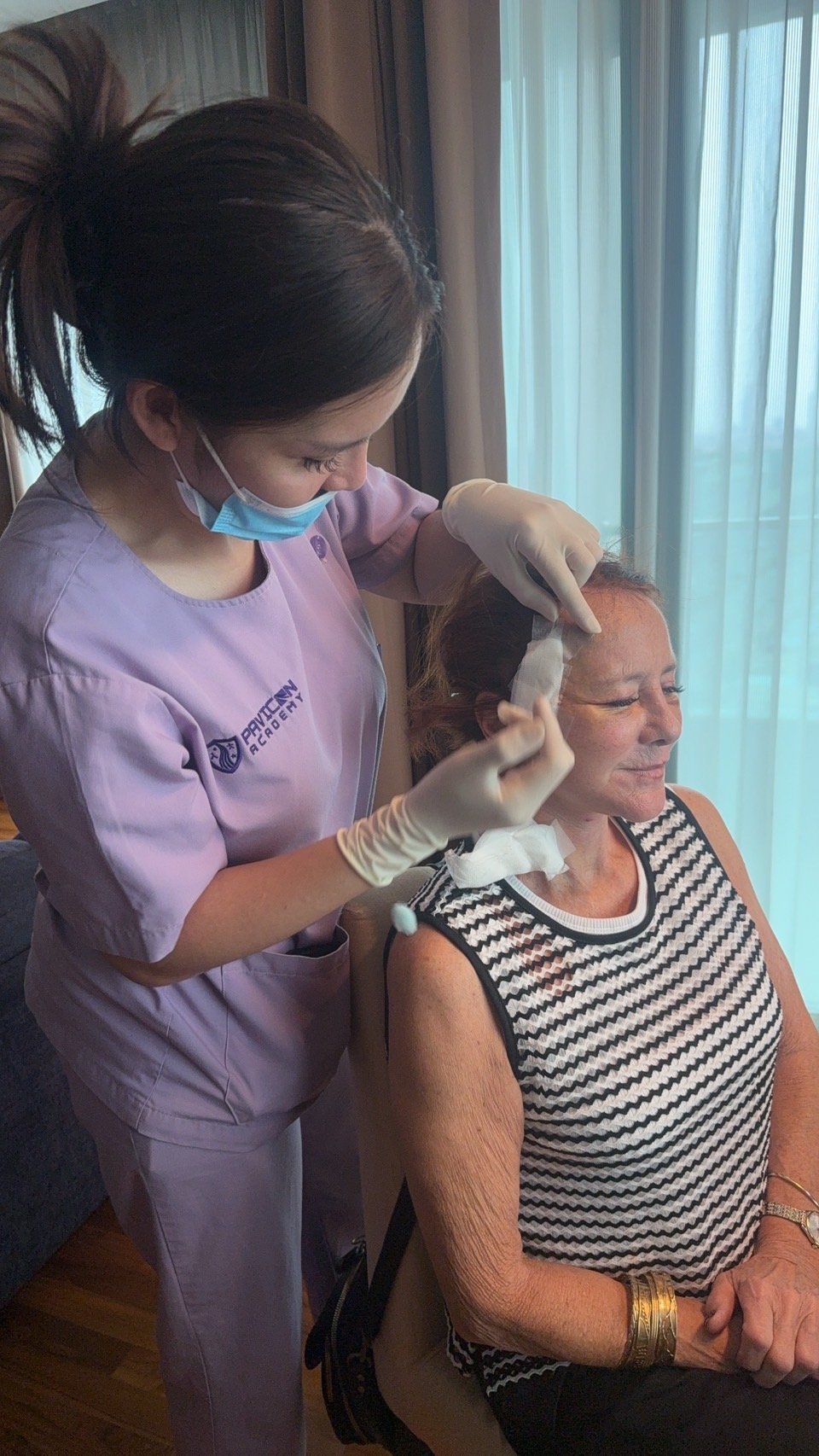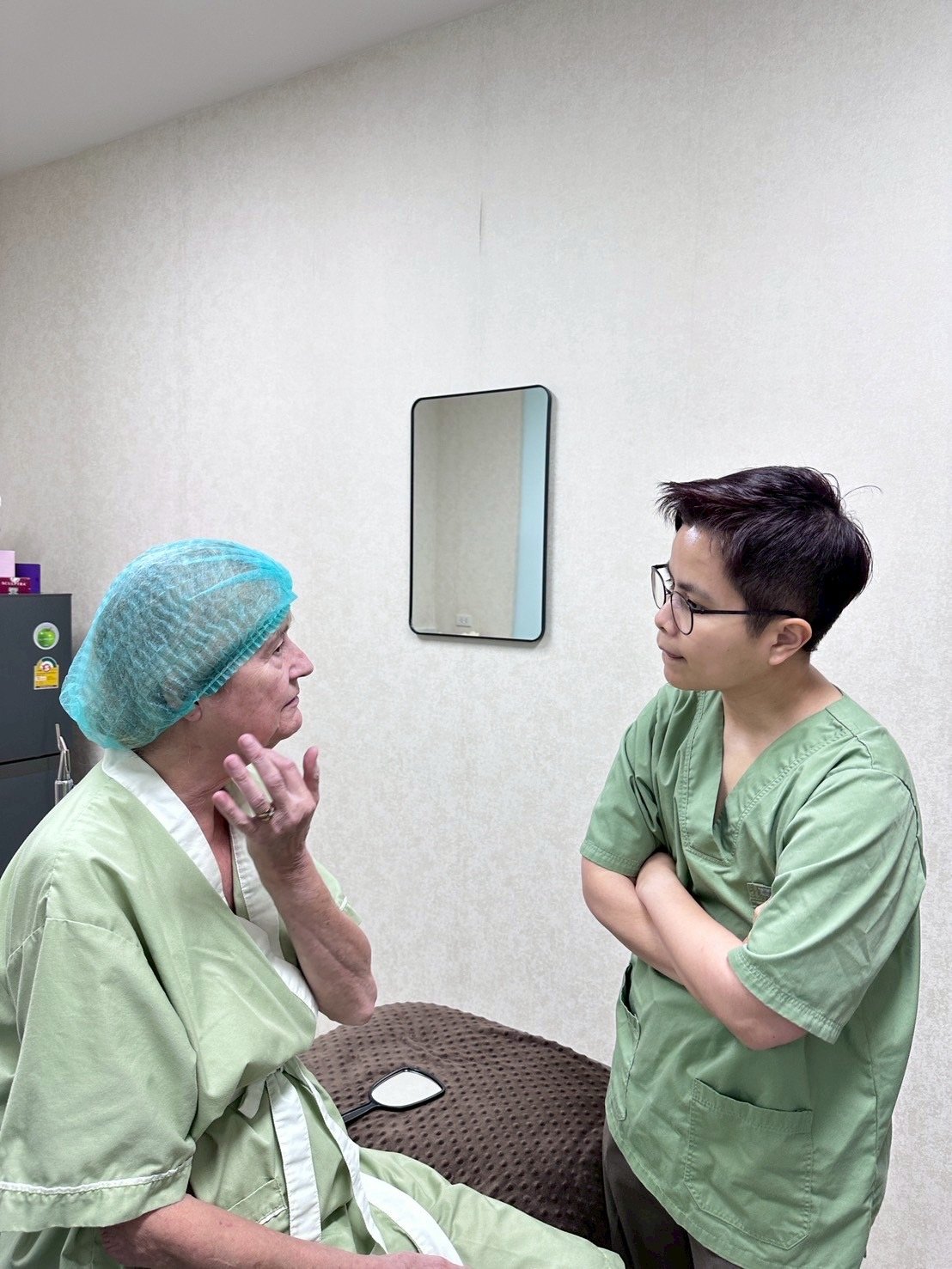The Right Care Before and After Plastic Surgery

A comprehensive guide based on best practices from certified plastic surgeons and clinical evidence. Proper care before and after surgery significantly improves outcomes, reduces complications, and supports optimal healing.

PRE-OPERATIVE CARE
Goals:
- Optimize overall health.
- Minimize surgical risks.
- Prepare mentally and physically for surgery
- Attend full consultation to review medical history, allergies, and current medications.
- Complete any required pre-operative testing (e.g., blood tests, ECG, imaging).
- Cease smoking at least four weeks prior to surgery to improve healing.
- Discontinue medications and supplements that increase bleeding risk (e.g., aspirin, NSAIDs, vitamin E, ginkgo, garlic, ginseng) at least two weeks before surgery.
- Ensure chronic conditions (such as hypertension or diabetes) are well-managed.
- Understand the expected outcomes and limitations of the procedure.
- Be aware of potential risks and downtime.
- Some procedures may require psychological evaluation, especially elective or cosmetic surgeries.
- Maintain a well-balanced diet rich in protein, iron, and vitamin C.
- Stay hydrated and avoid alcohol in the week leading up to surgery.
- Arrange for transportation and post-operative care support.
- Prepare a comfortable recovery area with essentials such as extra pillows, medications, and loose clothing.
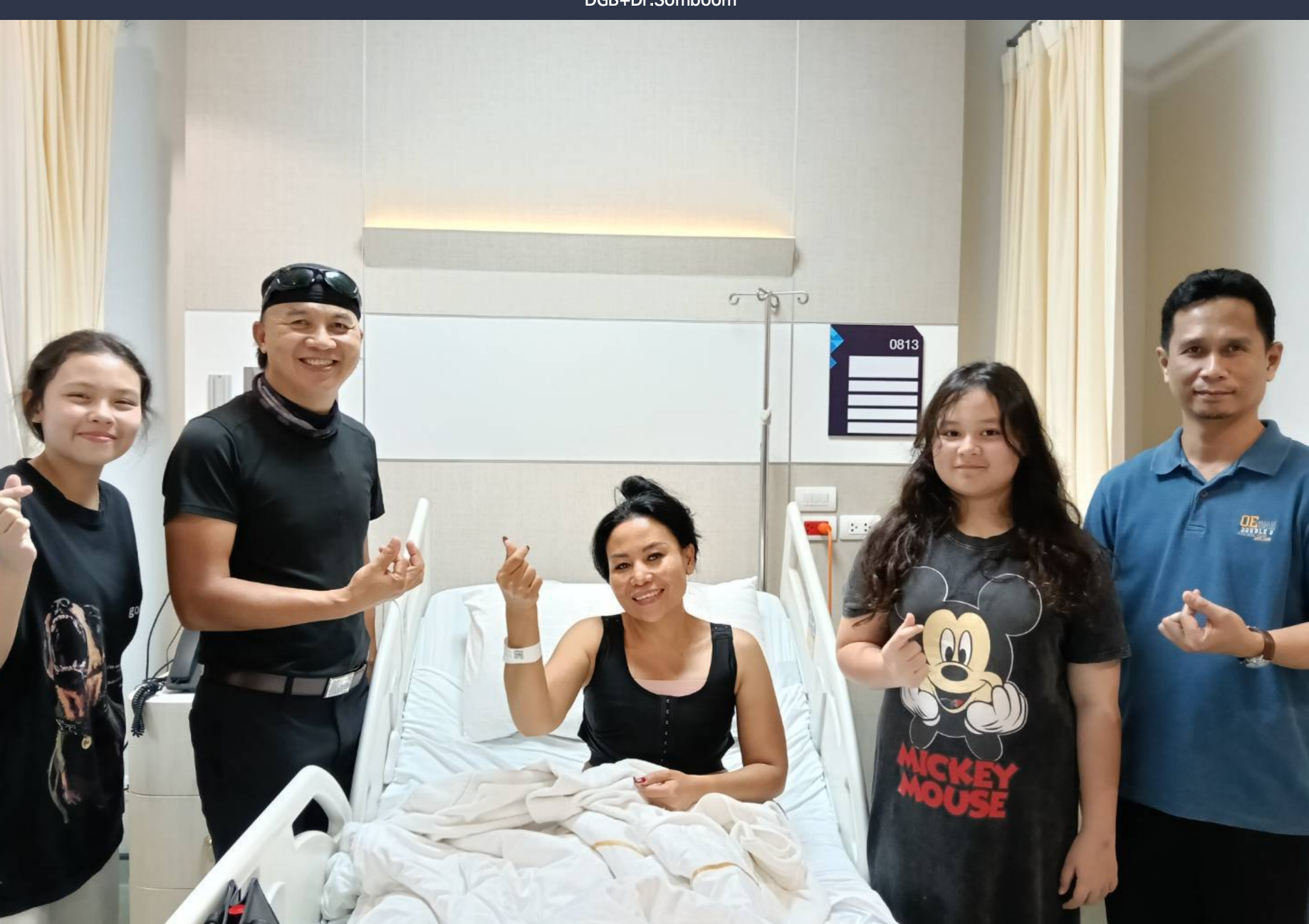
IMMEDIATE POST OPERATIVE CARE (First 2 Weeks)
Goals:
- Prevent infection and complications.
- Promote healing.
- Manage pain and swelling effectively.
- Follow hygiene protocols strictly.
- Use only prescribed ointments or sterile dressings.
- Do not remove surgical dressings, drains, or sutures unless instructed by your surgeon.
- Take all prescribed pain and antibiotic medications as directed.
- Avoid medications such as NSAIDs that may increase bleeding risk if instructed.
- Refrain from heavy lifting or strenuous activity for at least 2 to 6 weeks depending on the procedure.
- Elevate surgical areas to reduce swelling.
- Begin light walking as soon as safely possible to promote circulation and prevent blood clots.
Contact your surgical team immediately if you experience:
- A fever over 38.5°C (101°F).
- Unusual or increasing swelling or pain.
- Foul-smelling or discolored drainage.
- Redness extending from the surgical site.
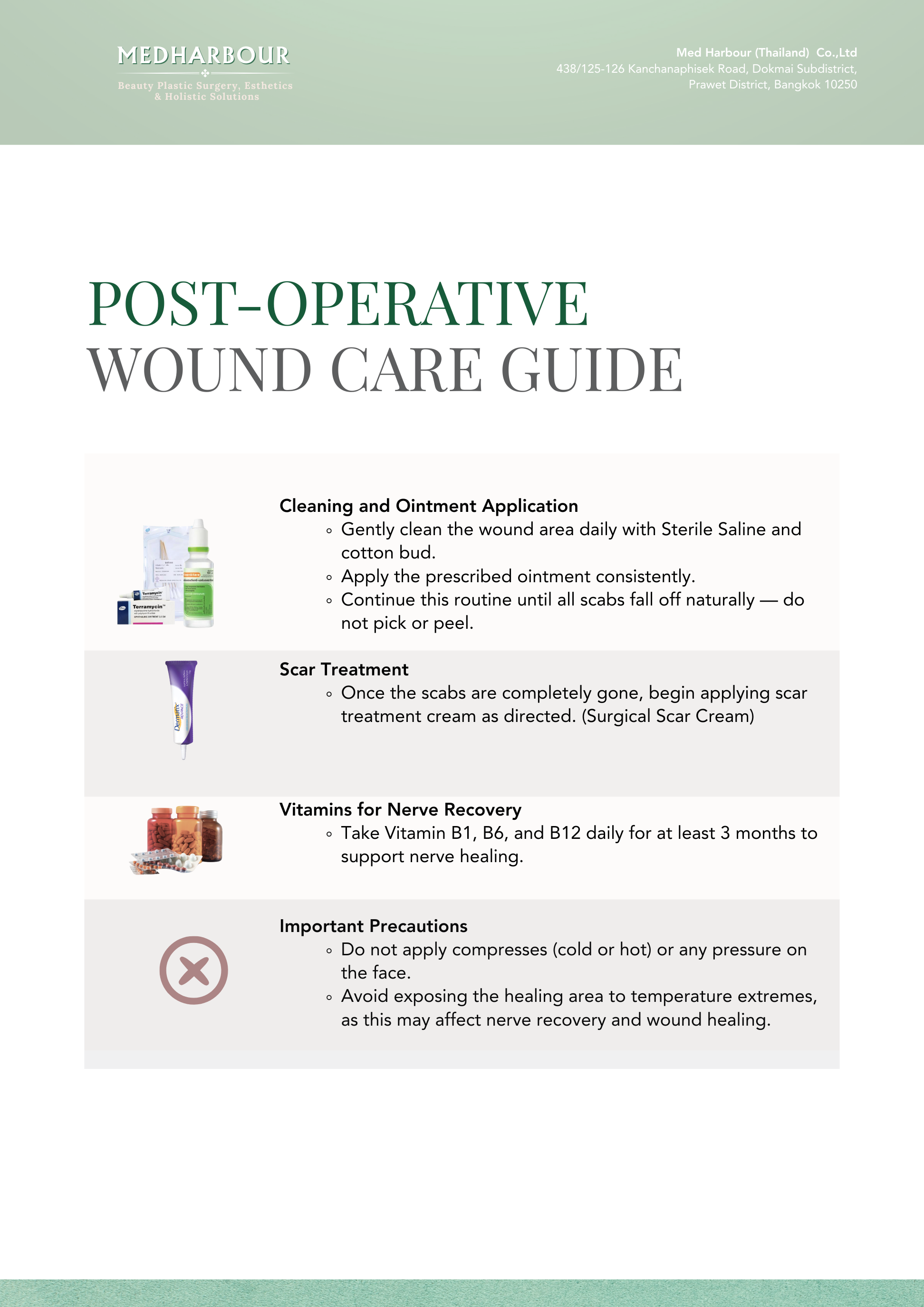
LONG-TERM RECOVERY AND MAINTENANCE
- Gradually return to normal routines.
- Maintain aesthetic and structural results.
- Support proper scar formation and tissue recovery.
A. Scar Management
- Apply sunscreen (SPF 30 or higher) to surgical areas to prevent hyperpigmentation.
- Massage scars gently if recommended by your surgeon.
B. Follow-Up Appointments
- Attend all scheduled follow-ups, typically at 1 week, 1 month, and 3 months post-op.
- Your surgeon will monitor healing and may adjust care accordingly.
- Resume physical activity gradually; start with light cardio after 4 weeks and strength training after 68 weeks.
- Maintain a healthy, stable weight.
- Avoid smoking entirely to preserve results and overall health.
D. Emotional Adjustment
- Be prepared for temporary emotional shifts or sensitivity during recovery.
- Understand that final results can take 3 to 12 months to fully develop, depending on the procedure.
SPECIFIC CONSIDERATION by SURGERY TYPE
